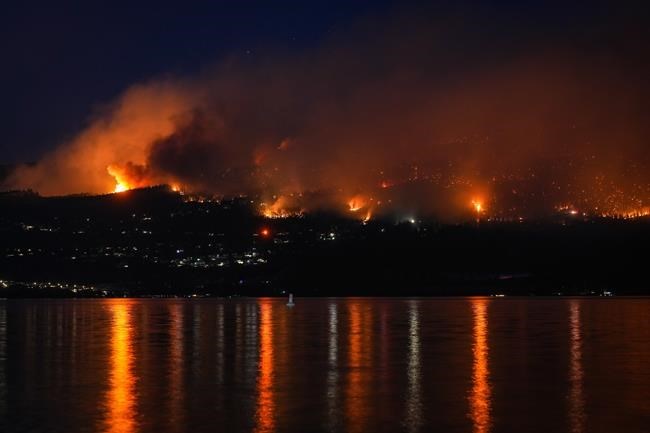The escalating risk of severe weather events is one of several factors putting pressure on insurance companies and potentially increasing premiums for consumers, experts say.
Extreme weather losses, inflation and reinsurance costs have all helped drive insurance premiums higher in recent years, said Craig Stewart, the Insurance Bureau of sa国际传媒’s vice-president of climate change and federal issues.
Severe weather caused more than $3.1 billion in insured damage in 2023, the bureau said, making it the fourth-worst year on record for insured losses.
"This grim statistic highlights the financial costs of a changing climate to insurers, governments and taxpayers," the bureau said in a release.
The Okanagan and Shuswap-area wildfires in sa国际传媒 cost $720 million in insured damage, the bureau said, while severe summer storms in Ontario and spring ice storms in Ontario and Quebec cost a combined $670 million.
Rising building costs for materials and labour have also contributed to higher premiums over time, Stewart said.
"As we build more and more homes to address the affordability crisis, ironically, what we're seeing is that materials and labour costs are going up," he said — "because of inflation, but also because of increased demand."
Globally, 2023 was the hottest year on record, according to European climate agency Copernicus.
Extreme weather events like wildfires and storm surge flooding tend to result in a higher volume of insurance claims, Ratehub.ca vice-president of insurance Matt Hands said in a statement.
"Climate change, along with the natural disasters, such as wildfires and flooding, continue to hit the insurance industry hard," he said. "The insurance providers will need to balance these losses on their books, potentially leading to a rise in premiums for everyone."
sa国际传媒 is warming faster than the rest of the world and its insured losses are also growing faster than the rest of the world, said Nadja Dreff, senior vice-president and head of Canadian insurance at Morningstar DBRS.
Despite this, the underwriting profitability of Canadian insurers has held up pretty well in recent years, she said, "especially if you compare it to some of the global reinsurance players who have been absorbing the brunt of these extreme weather losses."
But alongside severe weather losses and mounting costs to rebuild, there’s a third major factor influencing premiums: reinsurance, which is essentially insurance for insurers.
sa国际传媒 is a higher-risk area for reinsurers than many other parts of the world, Stewart said.
For some regions, particularly Alberta and sa国际传媒, "reinsurers have raised their premiums for insurers operating in those areas," he said.
"Insurers have absorbed part of that cost. But they also have passed on those increased costs to home insurance policies."
In response to a "drastic rise" in reinsurance prices in 2023, insurers raised their thresholds for reinsurance to rein in costs, Dreff said.
"It may differ company to company, but in general, what we've seen is that insurers have been buying less reinsurance," Dreff said. "In other words, reinsurance kicks in at higher levels of claims."
That means the insurers would have to absorb more of their claims — a trade-off with potential consequences that depend on how the year goes, she said.
According to a Morningstar DBRS outlook report published in December, premiums rose in 2022 and 2023 in the low-single digits.
Dreff expects premiums will continue to be pushed higher this year.
However, higher interest rates have improved investment outcomes, helping partially mitigate higher costs that might otherwise be passed on to consumers, she said.
Insurance costs are just one piece of a larger puzzle: the rising cost of living that Canadians have been grappling with for several years.
Climate risk, population growth and macroeconomic conditions support premium rate increases, but "they may prove to be more and more difficult to execute over time," according to the Morningstar DBRS report.
"After years of rapidly increasing prices on a range of goods and services, consumers are finding it more difficult to absorb additional costs, including that of insurance, amid their growing concerns related to the cost of living."
No one event drives up premiums, said Stewart, noting that a survey of insurers after the summer fires found no change in availability or affordability of wildfire insurance coverage. Instead, insurance pricing is driven by trends over time, he said.
Fire insurance is a core part of home coverage and highly unlikely to become unavailable, he said.
But escalating losses and revised risk modelling mean that many Canadians can’t access flood insurance, the bureau said in its report
The government has committed to a national flood insurance program, but progress on that has stalled, said Stewart.
"We are urging the federal government to put that program in place as soon as possible."
This report by The Canadian Press was first published Jan. 12, 2024.
Rosa Saba, The Canadian Press



